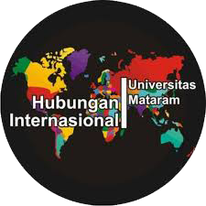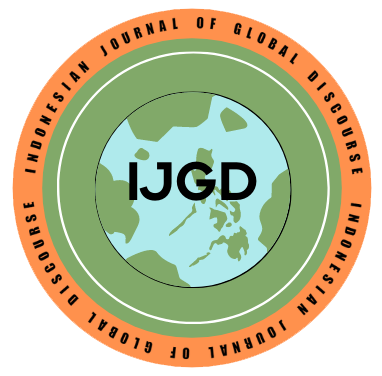Analisis Kepentingan Tiongkok dalam Kebijakan Belt and Road Initiative di Pakistan
DOI:
https://doi.org/10.29303/ijpss.v3i2.82Keywords:
Belt and Road Initiative, Hegemony, National Interest, Offensive Realism, PakistanAbstract
This study aims to analyze China's interests in the Belt and Road Initiative (BRI) policies in Pakistan. Currently, Pakistan is China's strategic partner in the implementation of the BRI project. The infrastructure development in several sectors in Pakistan is being carried out massively through direct loans from China. This certainly raises questions regarding China's interests in Pakistan and this study attempts to answer these questions. This study uses descriptive qualitative research methods with literature study as the data collection technique. To analyze the case, this study applies offensive realism theory, with the concepts of hegemony, and national interest. The results of this study indicate that China's efforts in Pakistan are actually a form of Chinese active maneuvers in achieving its interests, namely hegemony. Through the BRI project, China can connect with the largest oil-producing countries in order to meet its high industrial needs. Second, the connectivity created by BRI enables China to increase its force capability in the South Asian region. Third is political interests, in which China can create a positive image to substantially increase its diplomatic power and strengthen its international status. Lastly, the ideological interest in which China uses slogans such as the 'Chinese Dream' for the stability and legitimacy of Xi Jinping and the Chinese Communist Party over their domestic society
References
Ahmad, R., & Mi, H. (2017). China-Pakistan Economic Corridor and Its Social Implication on Pakistan: How Will CPEC Boost Pakistan’s Infrastructures and Overcome the Challenges? Arts and Social Sciences Journal, 8(2), 1–8. https://doi.org/10.4172/2151-6200.1000265
Ahmed, K. (2019, February 17). Saudi Arabia to invest $15-20bln in Pakistan during crown prince visit. Arab News. https://www.arabnews.com/node/1453646/amp
Alexander, D. (2018). Upaya Tiongkok Memenuhi Keubutuhan Energi Nasional Melalui Shanghai Cooperation Organization. Jurnal Analisis Hubungan Internasional, 7(1), 1–12. http://journal.unair.ac.id/download-fullpapers-jahif63a03b210full.pdf
Anam, S., & Ristiyani. (2018). Kebijakan Belt and Road Initiative (BRI) Tiongkok Pada Masa Pemerintahan Xi Jinping. Jurnal Ilmiah Hubungan Internasional, 14(2), 1–20. https://doi.org/https://doi.org/10.26593/jihi.v14i2.2842.217-236
Aryaguna, A., & Windiani, R. (2021). Memanfaatkan One Belt One Road: Kepentingan Ekonomi Pakistan dalam China-Pakistan Economic Corridor Tahun 2015-2020. Journal of International Relations, 7(3), 87–99. https://ejournal3.undip.ac.id/index.php/jihi/article/view/30676
Bainus, A., & Rachman, J. B. (2018). Editorial: Kepentingan Nasional dalam Hubungan Internasional. Intermestic: Journal of International Studies, 2(2), 109–115. https://doi.org/10.24198/intermestic.v2n2.1
BP. (2021). Statistical Review of World Energy 2020. https://www.bp.com/en/global/corporate/energy-economics/statistical-review-of-world-energy.html
CEIC. (2021). Tiongkok Pertumbuhan Ekspor. https://www.ceicdata.com/id/indicator/china/total-exports-growth
CNN Indonesia. (2020, July 21). Tegang dengan China, Kapal Induk AS dan India Latihan Bersama. https://www.cnnindonesia.com/internasional/20200721125704-113-527095/tegang-dengan-china-kapal-induk-as-dan-india-latihan-bersama
Dugis, V. (2016). Teori Hubungan Internasional. Cakra Studi Global Strategis.
Fahrizal, M., Yudila, A., & Sundari, R. (2019). Implementasi Konsep Kebijakan One Belt One Road (OBOR) China dalam Kerangka Kerjasama Pembangunan infrastruktur di Indonesia. Journal of Diplomacy and International Studies, 2(2), 77–96. https://doi.org/https://doi.org/10.25299/jdis.2019.vol2(02).5138
Habibie, N., & Zhu, H. Y. (2020, January 22). What CPEC Means for China’s Middle East Relations. The Diplomat. https://thediplomat.com/2020/01/what-cpec-means-for-chinas-middle-east-relations/
Haider, M. (2015, September 23). China Converts $230m Loan for Gwadar Airport Into Grant. Geo News. https://www.geo.tv/latest/6270-china-converts-230m-loan-for-gwadar-airport-into-grant
Ilyas, R. (2019, January 16). Qatar expresses interest i CPEC, Investment in Gwadar. Tribune. https://tribune.com.pk/story/1889424/1-qatar-expresses-interest-cpec-investment-gwadar
Irfan, R. (2018, January 9). Perlukah Cina Bangun Pangkalan Militer di Pakistan? Tirto.Id. https://tirto.id/perlukah-cina-bangun-pangkalan-militer-di-pakistan-cCXh
Islam, M. N. (2019). Silk Road to Belt Road Reinventing the Past and Shaping the Future. Springer.
James, H. (2021, November 24). China’s Quest for Greater ‘Discourse Power.’ The Diplomat. https://thediplomat.com/2021/11/chinas-quest-for-greater-discourse-power/
Kurniawan, Y. (2016). One Belt One Road (Obor): Agenda Keamanan Liberal Tiongkok? Jurnal Politica, 7(2), 233–254. https://doi.org/10.22212/jp.v7i2.1135
Mearsheimer, J. J. (2001). The Tragedy of Great Power Politics. W.W. Norton & Company.
Nufus, H. (2014). Impian Tiongkk: Nasionalisme Tiongkok Melintasi Batas Dalam Pembangunan Tiongkok. Jurnal Penelitian Politik, 11(2), 43–54. https://doi.org/https://doi.org/10.14203/jpp.v11i2.200
Nugroho, D. M. (2021). Geopolitik China Pakistan Economic Corridor (CPEC): Potensi Pembangunan Pipa Minyak Gwadar-Kashgar terhadap Mallaca Dillema [Universitas Pertamina]. https://library.universitaspertamina.ac.id/xmlui/handle/123456789/2977?show=full
Oedi, M. R. (2019). Faktor Kontruksi Idenitas dalam Kebijakan One Belt One Road Tiongkok [Universitas Muhammadiyah Malang]. https://eprints.umm.ac.id/47204/
Panos, M. (2018, April 14). What Is China Doing to Pakistan? The Same Thing It Did to Sri Lanka. Forbes. https://www.forbes.com/sites/panosmourdoukoutas/2018/04/15/what-is-china-doing-to-pakistan-the-same-thing-it-did-to-sri-lanka/?sh=581ab788ff53
Pea, R. (2016, November 26). Konsep Kepentingan Nasional dalam Hubungan Internasional. Jurnal SOH. http://ronapeafisip16.web.unair.ac.id.
Prawira, M. R. (2019). South China Sea Dispute. Jurnal Dinamika Global, 3(2), 35–54. https://doi.org/10.36859/jdg.v3i02.75
Putri, C. A. (2019, November 14). Ada Utang China di Mana-mana, dari Pakistan hingga Laos. CNBC Indonesia. https://www.cnbcindonesia.com/news/20191114095800-4-115160/ada-utang-china-di-mana-mana-dari-pakistan-hingga-laos
Rahmadani, S. (2019). Strategi China Menghadapi “Malacca Dilemma” dalam Rangka Pegamanan Jalur Energi Cina di Selat Malaka [Universitas Sumatera Utara.]. https://repositori.usu.ac.id/handle/123456789/15067
Richter, F. (2021, May 4). China Is the World’s Manufacturing Superpower. United Nations Statistic Division. https://www.statista.com/chart/20858/top-10-countries-by-share-of-global-manufacturing-output/
Rousseau, R. (2014, May 14). How China and Pakistan Shift the Balance of Power in South Asia. Diplomatic Courier. https://www.diplomaticourier.com/posts/how-china-and-pakistan-shift-the-balance-of-power-in-south-asia
Simosir, D., & Pahlawan, I. (2017). Faktor-Faktor yang Mempengaruhi Tiongkok Membentuk Kerjasama China-Pakistan Economic Corridor (CPEC). JOM FISIP Universitas Riau, 4(2), 1–17. https://jom.unri.ac.id/index.php/JOMFSIP/article/view/16357
Singh, A. G. (2019, March 2). China’s Vision for the Belt and Road in South Asia. The Diplomat.
The Maritime Executive. (2019, April 19). Pakistan Gives China a 40-Year Lease for Gwadar Port. https://www.maritime-executive.com/article/pakistan-gives-china-a-40-year-lease-for-gwadar-port
Toft, P. (2005). John J. Mearsheimer: an offensive realist between geopolitics and power. Journal of International Relations and Development, 8(4), 381–408. https://doi.org/10.1057/palgrave.jird.1800065
VOA Indonesia. (2016, November 15). Pakistan, China Buka Rute Baru Perdagangan Internasional. https://www.voaindonesia.com/a/pakistan-china-buka-rute-perdagangan-/3596789.html
Worldometer. (2016). Pakistan Oil. https://www.worldometers.info/oil/pakistan-oil/














